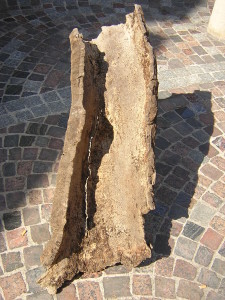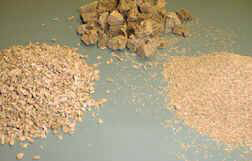 Cork as a construction material has been around for centuries, and has been used by some of the most notable architects in the world, including Frank Lloyd Wright. You’ll find cork floors in his iconic Falling Waters house in Pennsylvania, as well as his personal home and studio. Cork floors also grace the halls of numerous public institutions, such as the National Archives, Mayo Clinic, many federal court buildings, and numerous libraries and churches.
Cork as a construction material has been around for centuries, and has been used by some of the most notable architects in the world, including Frank Lloyd Wright. You’ll find cork floors in his iconic Falling Waters house in Pennsylvania, as well as his personal home and studio. Cork floors also grace the halls of numerous public institutions, such as the National Archives, Mayo Clinic, many federal court buildings, and numerous libraries and churches.
Cork might be selected for any one of its outstanding properties, such as resilience or acoustic properties, but it also adds character and function to these spaces in many other ways. A properly cared for cork floor can last upwards of 30 years, even in high traffic areas and public spaces. This is not your typical crumbly bulletin board cork, but a far more dense, resilient, beautiful cork, made as a by-product of the cork stopper industry in Europe. It exhibits many features that make it a superior flooring and building material:
Appearance
Resilience
Durability
Comfort
Heat Management
Sound Abatement
Non Slip
Largely Stain Resistant
Fire Resistant
Mold and Mildew Resistant
Insect Resistant
So what do all these features mean to the builder, boatyard craftsman, or weekend do-it-yourselfer?
Environmentally Friendly/Sustainable
 Cork flooring is actually made from the cultivated waste of the cork wine-stopper manufacturing process, so it is a recycled product. Cork harvesting does not harm the trees, and is a highly regulated process to ensure sustainability. Bottle stopper “corks” are punched from the best material in the harvested cork bark slabs. The remaining material is then ground into smaller granules, mixed with a non-toxic resin binder, molded into large blocks and baked in specialized ovens – making use of every scrap of cork bark. There is practically no waste from the harvesting of the raw material to the manufacturing of flooring.
Cork flooring is actually made from the cultivated waste of the cork wine-stopper manufacturing process, so it is a recycled product. Cork harvesting does not harm the trees, and is a highly regulated process to ensure sustainability. Bottle stopper “corks” are punched from the best material in the harvested cork bark slabs. The remaining material is then ground into smaller granules, mixed with a non-toxic resin binder, molded into large blocks and baked in specialized ovens – making use of every scrap of cork bark. There is practically no waste from the harvesting of the raw material to the manufacturing of flooring.
Easy to Install
There is no need for expensive power saws, routers, etc. when installing a Seacork floor. A sharp utility knife, pen and straight edge are about all you will need. A Dremel tool and some power sanding tools might be helpful, depending on your desired finished product. After creating proper templates for your pieces, it’s simply a matter of cutting, light sanding, cleaning of the surface, and gluing in place. This site has helpful step-by-step instructions for various kinds of projects, so you know what to expect and can avoid any issues. These projects are easily handled by a moderately skilled Do-It-Yourselfer.
Easy to Maintain
The key to lasting durability of a cork floor is dirt management. Shoe-free households and boaters will always appreciate cork the most. If you regularly sweep or vacuum your cork floor, and put out floor rugs near entryways to prevent tracked-in dirt, your cork floor will require very little additional maintenance. The regimen will depend largely on the installation and finish you choose. At one end of the spectrum is an unfinished cork area on the transom of a boat. Regular scrubbing with sea water, every week or so, will result in a very clean and tidy appearance, although the cork will fade toward a natural gray color, just like teak. At the other end of the spectrum is a cork shower floor installation, which because of constant rinsing, will likely never need any additional maintenance.
Easy to Repair
“There are very few problems with a cork floor that you cannot sand your way out of.” Words to live by. In the unlikely case your cork floor experiences some significant damage, you can simply cut out the problem section, and cut a new piece to fit. With properly done seams, it will all but disappear into the original floor surrounding it.
